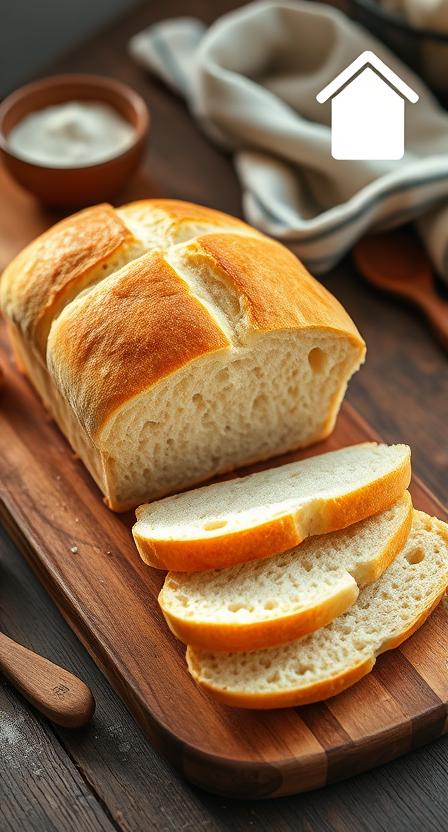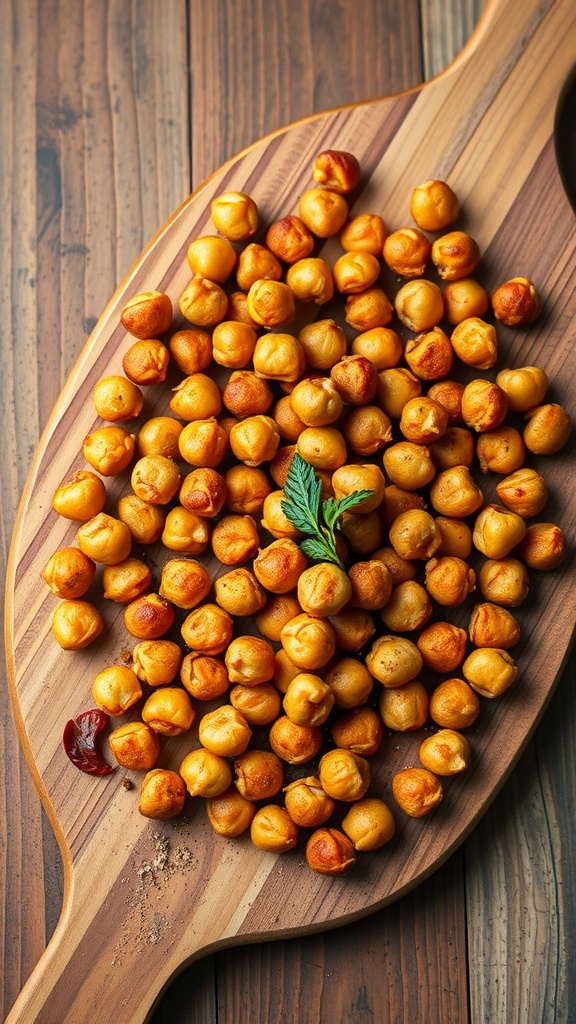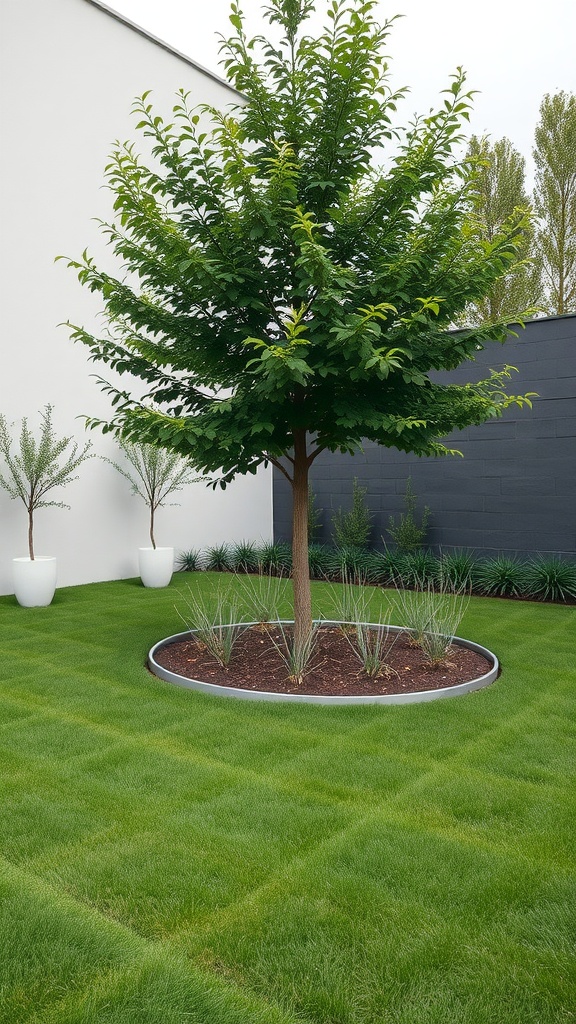There’s something absolutely magical about the smell of fresh bread baking in your oven. You know that incredible aroma that makes your whole house feel like home? That’s exactly what we’re going to create today. I’ve been making bread for over a decade, and let me tell you – once you taste homemade white bread, you’ll never want to go back to that squishy store-bought stuff again.
Why Homemade White Bread Beats Store-Bought Every Single Time
Let’s be honest here – have you ever looked at the ingredients list on a loaf of store-bought bread? It reads like a chemistry textbook! I remember the first time I actually read one of those labels. Calcium propionate, azodicarbonamide, DATEM – seriously, what even are these things? When I make bread at home, I use ingredients I can actually pronounce. Flour, water, yeast, sugar, salt, and oil – that’s it!
The taste difference is absolutely mind-blowing. Store-bought bread tastes like… well, like nothing really. It’s just squishy and bland. But homemade white bread? It’s got this amazing soft, pillowy texture with a golden crust that actually has flavor. Plus, you get that satisfaction of creating something incredible with your own two hands.
I started making my own bread because my family was going through two loaves a week, and the grocery bill was getting ridiculous. Now I make four loaves every weekend, and it costs me about a third of what I used to spend. Talk about a win-win situation!
Understanding the Science Behind Perfect White Bread
Before we jump into the actual recipe, let’s talk about what makes bread work. Don’t worry – I’m not going to bore you with a college-level chemistry lesson. But understanding the basics will help you troubleshoot when things go wrong (and trust me, they sometimes will).
The Magic of Yeast
Yeast is basically a tiny living organism that eats sugar and produces carbon dioxide gas. This gas creates all those beautiful air pockets that make bread fluffy instead of dense like a brick. When I first learned this, I was amazed that something so small could create something so wonderful.
The key thing about yeast is temperature. Too hot, and you’ll kill it. Too cold, and it’ll just sit there doing absolutely nothing. The sweet spot is around 100-110°F (37-43°C). How do you test this without a thermometer? Simple – the water should feel comfortably warm on your wrist, like a baby’s bath.
Gluten Development
Here’s where things get really interesting. When you mix flour with water and start kneading, you’re developing gluten networks. Think of gluten as tiny elastic bands that trap the gas bubbles from the yeast. This is what gives bread its structure and chewiness.
Proper kneading is absolutely crucial for developing these gluten networks. You’ll know your dough is ready when it becomes smooth and elastic. I like to do the “windowpane test” – stretch a small piece of dough between your fingers. If you can stretch it thin enough to see light through it without tearing, you’re good to go!
Essential Ingredients for Perfect White Bread
Let’s talk about what you’ll actually need to make this incredible bread. The beauty of this recipe is its simplicity – no fancy ingredients or special equipment required.
The Core Ingredients
Bread flour vs. All-purpose flour – This is probably the most common question I get. While you can definitely use all-purpose flour (and I’ll show you how), bread flour has a higher protein content which creates better gluten development. The result? A slightly chewier, more structured loaf.
Active dry yeast is my go-to choice. It’s reliable, shelf-stable, and available everywhere. You’ll need about 2¼ teaspoons (one packet) for a standard loaf. Always check the expiration date – dead yeast equals flat bread, and nobody wants that disappointment.
Sugar serves multiple purposes here. It feeds the yeast, helps with browning, and adds a subtle sweetness that balances the overall flavor. Regular white granulated sugar works perfectly fine.
Salt is absolutely essential – not just for flavor, but also for controlling yeast activity and strengthening gluten. Never skip it, even if you’re watching your sodium intake.
The Supporting Cast
Warm water is what brings everything together. The temperature is critical – too hot kills the yeast, too cold slows everything down to a crawl.
Oil or melted butter adds richness and helps keep the bread soft. I personally prefer vegetable oil or olive oil because it’s easier to work with and creates a consistently tender crumb.
Some recipes call for milk, but I’ve found that water-based breads actually stay fresh longer and have a cleaner flavor. Plus, using water instead of milk ensures our bread follows proper dietary guidelines that many families prefer.
Equipment You’ll Actually Need
Good news – you don’t need a fancy kitchen to make amazing bread! Here’s what I consider essential versus nice-to-have.
Must-Have Equipment
A large mixing bowl is absolutely necessary. I prefer glass or stainless steel because they’re easy to clean and don’t retain odors.
Measuring cups and spoons – baking is science, and accuracy matters. Don’t eyeball ingredients if you want consistent results.
Two 9×5 inch loaf pans are standard for this recipe. Make sure they’re properly greased or lined.
Clean kitchen towels for covering the dough during rising periods.
Nice-to-Have Equipment
A stand mixer with dough hook makes kneading effortless, but it’s absolutely not required. I made bread by hand for years before getting my mixer.
A kitchen scale for measuring ingredients by weight rather than volume. This gives more consistent results, but cup measurements work fine too.
An instant-read thermometer takes the guesswork out of water temperature, but the wrist test works just as well.
Step-by-Step Instructions for Amazing White Bread
Alright, let’s get our hands dirty! This is where the magic happens, and I promise it’s easier than you think.
Step 1: Activating the Yeast
Start by measuring 1 cup of warm water (remember, baby-bath warm). Add 1 tablespoon of sugar and 2¼ teaspoons of active dry yeast. Give it a gentle stir and let it sit for about 5-10 minutes.
You’ll know it’s working when the mixture becomes foamy and bubbly on top. If nothing happens after 10 minutes, your yeast is probably dead, and you’ll need to start over with fresh yeast. Don’t skip this step – it’s your insurance policy against flat bread!
Step 2: Building the Dough
In your large mixing bowl, combine 3 cups of all-purpose flour with 1 teaspoon of salt. Make a well in the center and pour in your activated yeast mixture along with 2 tablespoons of vegetable oil.
Start mixing with a wooden spoon until the dough begins coming together. It’ll look shaggy and rough at first – that’s completely normal! Once it starts forming a cohesive mass, it’s time to get your hands in there.
Step 3: The Kneading Process
Turn the dough out onto a lightly floured surface. Now comes the therapeutic part – kneading! Push the dough away from you with the heel of your hand, fold it back over itself, give it a quarter turn, and repeat.
Keep kneading for 8-10 minutes until the dough becomes smooth and elastic. If it feels too sticky, add flour a tablespoon at a time. If it’s too dry, add water a teaspoon at a time. The dough should feel soft and slightly tacky, but not sticky enough to stick to your hands.
Step 4: First Rise
Lightly oil a clean bowl and place your dough inside, turning it once to coat all surfaces. Cover with a damp kitchen towel and place in a warm, draft-free location.
I like to turn my oven on for just a minute, then turn it off and place the bowl inside with the door slightly ajar. The residual warmth creates the perfect environment for rising.
Let the dough rise for 60-90 minutes until it doubles in size. You’ll know it’s ready when you can poke it with your finger and the indentation stays.
Step 5: Shaping the Loaves
Punch down the risen dough to deflate it – this step always makes me feel powerful! 🙂 Turn it out onto a lightly floured surface and divide it in half if you’re making two loaves (which I recommend).
Shape each portion into a loaf by flattening it into a rectangle, then rolling it up tightly from the short end. Pinch the seam closed and place seam-side down in your greased loaf pans.
Step 6: Second Rise
Cover the shaped loaves with damp towels again and let them rise for another 30-45 minutes. They’re ready when the dough crowns above the rim of the pans.
Step 7: Baking to Perfection
Preheat your oven to 375°F (190°C) during the last 15 minutes of the second rise. For an extra-golden top, brush the loaves with a little oil or melted butter before baking.
Bake for 30-35 minutes until the tops are golden brown and the loaves sound hollow when tapped on the bottom. The internal temperature should reach 190°F (88°C) if you have a thermometer.
Step 8: Cooling and Storing
This is the hardest part – waiting! Let the bread cool in the pans for 10 minutes, then turn them out onto wire racks. Try to resist cutting into them for at least 30 minutes to let the crumb set properly.
Common Mistakes and How to Avoid Them
Let me share some hard-learned lessons from my bread-making journey. These mistakes happen to everyone, so don’t feel bad if you’ve made them too!
Mistake #1: Wrong Water Temperature
Too hot water kills yeast instantly, and you won’t realize it until your bread fails to rise. Always test the temperature – it should feel comfortably warm, never hot.
Too cold water means sluggish yeast activity. Your bread will still rise, but it’ll take forever, and the flavor development won’t be as good.
Mistake #2: Inadequate Kneading
Under-kneaded dough results in dense, heavy bread with poor texture. Your arms might get tired, but proper kneading is essential for developing gluten structure.
Over-kneaded dough (more common with stand mixers) becomes tough and difficult to shape. The dough will feel tight and may even tear when you try to stretch it.
Mistake #3: Rising Issues
Under-proofed bread will be dense and gummy inside. Make sure your dough has truly doubled in size before moving to the next step.
Over-proofed dough will collapse during baking, resulting in a flat loaf with large, irregular holes. If your dough looks like it’s starting to deflate on its own, it’s gone too far.
Mistake #4: Oven Temperature Problems
Too high temperature creates a dark crust while leaving the inside underbaked. Too low temperature results in pale, soft crusts and can make the bread gummy.
Always use an oven thermometer to verify your actual oven temperature – many home ovens run hot or cold.
Variations and Flavor Additions
Once you’ve mastered the basic recipe, the world of bread variations opens up! Here are some of my favorite modifications that work beautifully with this base recipe.
Sweet Variations
Cinnamon Swirl Bread – Roll out your shaped dough, brush with melted butter, sprinkle with cinnamon and sugar, then roll up tightly. The kids absolutely love this version!
Honey Wheat Blend – Replace 1 cup of all-purpose flour with whole wheat flour and add 2 tablespoons of honey to the liquid ingredients.
Savory Options
Herb Bread – Add 1 tablespoon of dried herbs (rosemary, thyme, or oregano work great) to the flour mixture.
Garlic Bread Base – Knead in 2-3 minced garlic cloves during the final minutes of kneading. Perfect for Italian night!
Texture Variations
Seeded Bread – Brush the tops with oil and sprinkle with sesame seeds, poppy seeds, or everything bagel seasoning before baking.
Enriched Bread – Replace ¼ cup of water with the same amount of oil for an extra-tender crumb.
Troubleshooting Your Bread-Making Journey
Even experienced bakers run into issues sometimes. Here are solutions to the most common problems I’ve encountered over the years.
Dense, Heavy Bread
This usually indicates yeast problems or insufficient rising time. Check your yeast expiration date and make sure your rising environment is warm enough. Dense bread can also result from using too much flour or not kneading adequately.
Bread That Won’t Rise
Dead yeast is the most common culprit. Always proof your yeast first to ensure it’s active. Cold environments also slow rising significantly – find a warmer spot or be patient.
Gummy or Undercooked Interior
This happens when the oven temperature is too high, cooking the outside too quickly while leaving the inside underdone. Lower your temperature by 25°F and bake longer, or tent the loaves with foil if they’re browning too fast.
Crust Too Hard or Too Soft
A hard crust usually indicates too high baking temperature or over-baking. A soft crust might mean under-baking or too much moisture in the oven. Try adjusting your temperature and timing accordingly.
Storage and Freshness Tips
Fresh bread is amazing, but what about keeping it that way? Here’s how I maintain optimal freshness and flavor.
Short-Term Storage
Room temperature storage works best for the first 2-3 days. Wrap cooled loaves in clean kitchen towels or store in bread boxes. Avoid plastic bags for short-term storage as they make the crust soft and can promote mold growth.
Slice only what you need to maintain freshness. The interior stays moister when the loaf remains whole.
Long-Term Storage
Freezing is your best friend for longer storage. Wrap cooled loaves tightly in plastic wrap, then aluminum foil, and freeze for up to 3 months.
Slice before freezing if you want the convenience of grabbing individual pieces. Lay slices on a baking sheet to freeze individually, then transfer to freezer bags.
Reviving Day-Old Bread
Light toasting brings back texture and flavor to slightly stale bread. For whole loaves, wrap in damp paper towels and microwave for 10-15 seconds, then place in a 350°F oven for 5 minutes.
French toast and bread pudding are fantastic ways to use bread that’s past its prime for eating fresh.
The Economics of Homemade Bread
Let’s talk money – because who doesn’t love saving cash? Making your own bread is incredibly cost-effective, especially if your family goes through bread quickly like mine does.
Cost Breakdown
A basic loaf of decent white bread at the store costs $2-4, while the ingredients for homemade bread cost about $0.75-1.00 per loaf. The savings add up quickly!
Bulk ingredient buying makes it even more economical. I buy flour in 25-pound bags and store it in airtight containers. The per-loaf cost drops to around $0.50 this way.
Time Investment
Yes, bread-making takes time, but most of it is hands-off rising time. Active work time is only about 20-30 minutes spread throughout the day. I usually start bread on Saturday morning and have fresh loaves by afternoon.
Batch making maximizes efficiency. I often make 4-6 loaves at once, freezing extras for later. This brings the time investment per loaf way down.
Health Benefits of Homemade White Bread
While whole grain breads get all the health press, homemade white bread has its own advantages over commercial versions.
No Unnecessary Additives
Commercial bread preservatives like calcium propionate and potassium sorbate aren’t inherently dangerous, but they’re completely unnecessary when you’re eating fresh bread regularly.
Simplified ingredient lists mean you know exactly what’s going into your family’s bodies. No mystery chemicals or unpronounceable additives.
Better Nutrition Control
Reduced sodium – you control exactly how much salt goes in. Many commercial breads are surprisingly high in sodium.
Quality ingredients – you choose the flour quality, oil type, and sugar source. This makes a difference in both nutrition and flavor.
Digestibility
Many people find homemade bread easier to digest than commercial versions. This might be due to the simpler ingredient list, better fermentation, or absence of preservatives.
Fresh bread simply processes differently in your system than bread that’s been sitting on shelves for weeks.
Frequently Asked Questions
1. Can I make this bread without a stand mixer?
Absolutely! I made bread by hand for years before getting my mixer. The kneading process takes a bit longer (about 10-12 minutes instead of 6-8), but the results are just as good. Think of it as a great arm workout! 🙂
2. Why didn’t my bread rise properly?
The most common reasons are expired or dead yeast, water that was too hot (which killed the yeast), or too cold environment for rising. Always proof your yeast first, and find a warm (75-80°F), draft-free spot for rising.
3. Can I use whole wheat flour instead of white flour?
You can substitute up to half the all-purpose flour with whole wheat flour without major changes to the recipe. For 100% whole wheat, you’ll need to add more liquid and expect a denser texture. The rising time will also be longer.
4. How do I know when the bread is fully baked?
The golden brown color is your first clue, but the best test is the hollow sound when you tap the bottom of the loaf. An instant-read thermometer should read 190-200°F in the center.
5. Can I add ingredients like nuts or dried fruit?
Yes! Add up to ½ cup of mix-ins during the last few minutes of kneading. Nuts, seeds, and dried fruits work great. Just make sure any dried fruits are well-drained to prevent excess moisture in the dough.
6. My bread has a dense, heavy texture. What went wrong?
This usually indicates insufficient kneading, old yeast, or too much flour. Make sure you’re measuring flour correctly (spoon it into the cup and level off) and knead until the dough is smooth and elastic.
7. Can I make the dough ahead of time?
Definitely! You can make the dough through the first rise, then refrigerate it overnight. Let it come to room temperature before shaping and doing the second rise. This actually improves the flavor through slower fermentation.
8. Why is my crust too hard or too soft?
A hard crust usually means the oven temperature was too high or the bread was over-baked. A soft crust might indicate under-baking or too much moisture. Adjust your temperature and timing accordingly for your preferred crust texture.
9. How long will homemade bread stay fresh?
Properly stored at room temperature, homemade bread stays fresh for 2-3 days. After that, it’s still fine for toasting or cooking. For longer storage, freeze wrapped loaves for up to 3 months.
10. Can I double or halve this recipe?
Absolutely! This recipe scales well. For doubling, you might need to increase kneading time slightly. For halving, you can make one loaf in an 8×4 inch pan or use the full recipe for two standard 9×5 inch loaves.
11. What’s the difference between bread flour and all-purpose flour?
Bread flour has higher protein content (about 12-14% vs. 10-11% for all-purpose), which creates stronger gluten development and a chewier texture. All-purpose flour works fine and creates a slightly more tender crumb.
12. Can I bake this bread in different pan sizes?
Yes! For mini loaves, use 5.75×3 inch pans and reduce baking time to 20-25 minutes. For round loaves, shape into boules and bake on parchment-lined baking sheets. Adjust timing based on the size of your finished loaves.
Conclusion
Making your own white bread from scratch isn’t just about saving money or avoiding preservatives – though those are nice bonuses! It’s about creating something wonderful with your own hands, filling your home with incredible aromas, and sharing something truly special with the people you love.
I hope this guide gives you the confidence to start your own bread-making journey. Remember, every baker has made mistakes along the way (myself included!), so don’t get discouraged if your first loaf isn’t perfect. Each attempt teaches you something new, and before you know it, you’ll be turning out bakery-quality loaves that make your neighbors jealous.
The satisfaction of slicing into a warm, fresh loaf that you made yourself is absolutely unmatched. Once you experience that first bite of pillowy, homemade goodness, you’ll understand why bread baking has captured hearts for thousands of years. So roll up your sleeves, get your hands a little floury, and start creating some delicious memories in your kitchen!
Citations:
- https://ppl-ai-file-upload.s3.amazonaws.com/web/direct-files/attachments/71577208/05b63aaf-6856-4dd0-8c4a-fefa6635a8e8/paste.txt
- https://preppykitchen.com/white-bread/
- https://thesouthernladycooks.com/best-homemade-white-bread/
- https://cloudykitchen.com/blog/white-bread-loaf/
- https://www.thefreshloaf.com/node/39808/basic-bread-problems
- https://cruciblecookware.com/blogs/tips-and-inspiration-for-cookware-cooking-baking/understanding-hydration-percentage-in-bread-why-it-matters-and-how-it-affects-your-loaf
- https://bakerbettie.com/autolyse-method/
- https://freescience.info/the-science-of-crumb-structure-in-cakes-and-breads/
- https://www.hovis.co.uk/blogs/how-to-store-your-bread-for-maximum-freshness
- https://cookingpanda.com/blogs/food-news/what-knife-is-used-to-cut-bread
- https://www.youtube.com/watch?v=-Ox0qxlkayI
- https://sahabah.com/is-yeast-halal
- https://halalthinker.com/is-butter-halal/
- https://www.youtube.com/watch?v=RuxMJBli9yk
- https://www.bakingclassinchennai.com/blog/learn-about-types-of-kneading-techniques-when-to-use-them/
- https://cotswoldflour.com/blogs/baking-resources/world-flour-day-celebration-8-best-flours-for-baking-bread
- https://www.theflavorbender.com/homemade-white-bread-recipe/
- https://simply-delicious-food.com/easy-white-bread/
- https://www.youtube.com/watch?v=Gg5hvOg2EfA
- http://www.recipies.50webs.com/Bread%20troubleshooting.htm
- https://www.jocooks.com/recipes/white-bread-recipe/
- https://tastesbetterfromscratch.com/bread-recipe/
- https://www.browneyedbaker.com/white-bread-recipe/
- https://www.allrecipes.com/recipe/6788/amish-white-bread/
- https://www.sourdoughhome.com/breadmaking-troubleshooting-tips/
- https://www.seriouseats.com/troubleshoot-bad-bread-messed-up-loaf
- https://www.bbcgoodfood.com/howto/guide/baking-sos-how-solve-10-common-bread-problems-luis-troyano
- https://dontwastethecrumbs.com/ultimate-troubleshooting-guide-for-baking-bread/
- https://www.youtube.com/watch?v=Ku9wAbLbI9A
- https://www.reddit.com/r/Breadit/comments/1fareh/what_are_the_benefits_of_using_milk_for_making/
- https://myhalalkitchen.com/my-daily-bread-recipe/
- https://www.thekitchn.com/how-to-make-challah-bread-181004
- https://www.allrecipes.com/recipe/172633/easy-challah-bread/
- https://halalfoundation.org/halal-and-haram-ingredients-list/
- https://www.masterclass.com/articles/kneading-techniques
- https://sallysbakingaddiction.com/how-to-knead-dough/
- https://www.youtube.com/watch?v=BJiucv88flM
- https://bread-magazine.com/kneading-technique-roundup/
- https://www.craftybaking.com/how-to/hydration-bread-dough/
- https://www.chainbaker.com/milk-effects/
- https://jamaica-gleaner.com/gleaner/20130509/cook/cook3.html
- https://www.soupersage.com/compare-nutrition/white-bread-vs-milk
- https://library.ndsu.edu/ir/bitstream/handle/10365/23588/ndfr_19500501_v12_iss05_149.pdf?isAllowed=y&sequence=1
- https://www.kitchenstories.com/en/stories/how-to-store-bread-prevent-it-from-moulding-and-drying-out-and-learn-to-freshen-it-up-again
- https://jonoknife.co.uk
- https://www.youtube.com/watch?v=346lmaU4V8g
- https://imanupdate.com/is-yeast-halal/
- https://www.alibaba.com/showroom/bread-flavor-enhancer.html
- https://timesofindia.indiatimes.com/life-style/health-fitness/diet/keep-mold-away-from-bread/articleshow/14733033.cms
- https://www.youtube.com/watch?v=RJRIpajXcTM
- https://www.thespruceeats.com/best-flours-5097366






